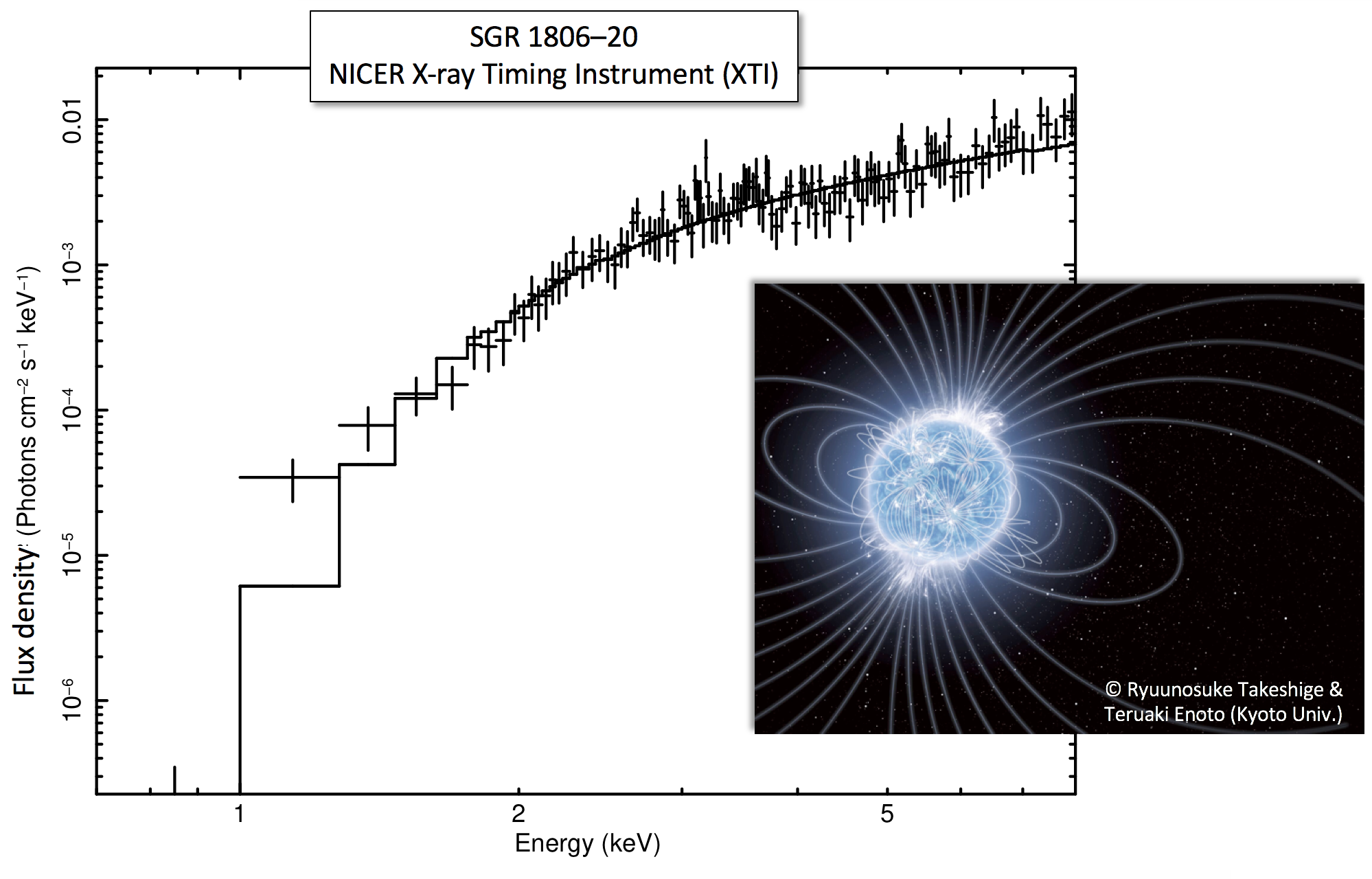NICER / ISS Science Nugget for October 19, 2018Rapid follow-up of bright, short bursts from SGR 1806-20Magnetars are an enigmatic species of neutron star, the strongest known magnets in the Universe. Soft Gamma Repeaters (SGRs) represent a type of magnetar behavior characterized by sporadic bursting activity. SGR 1806-20 is the most powerful object among this class. Its surface magnetic field strength is believed to be 2 x 1011 Tesla or higher, 15 orders of magnitude stronger than the Earth's magnetic field. SGR 1806-20 produced a tremendous soft gamma-ray flare on December 27, 2004, among the brightest celestial explosions ever seen from Earth. The giant flare was so powerful that it briefly puffed up the Earth's ionosphere, which is impressive for a star only about 25 km across and 50,000 light-years away. (If SGR 1806-20 were 10 light-years away, that blast would have wiped out the Earth's ozone layer.) Following this famous event, the magnetar's persistent X-ray emission has been gradually decaying. This sleeping monster re-awoke this week, emitting two bright, short bursts on October 14 that were detected by the Burst Alert Telescope on-board NASA's Swift observatory. NICER promptly performed follow-up observations, detected its X-ray emission (figure), and continues to monitor this intriguing object.
NICER
|



